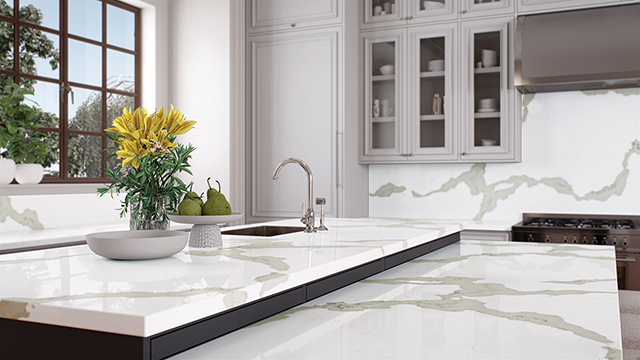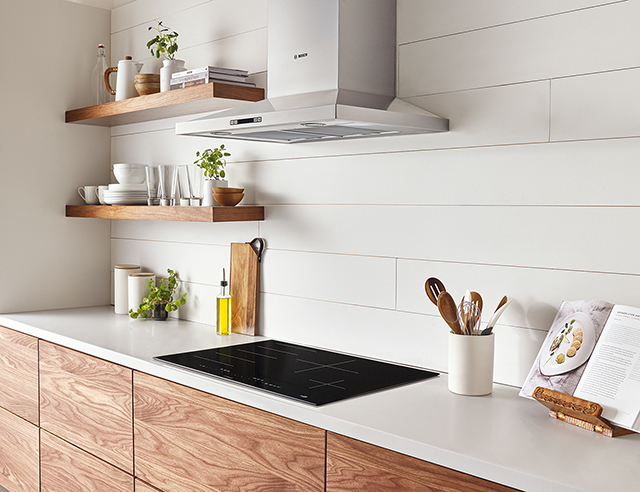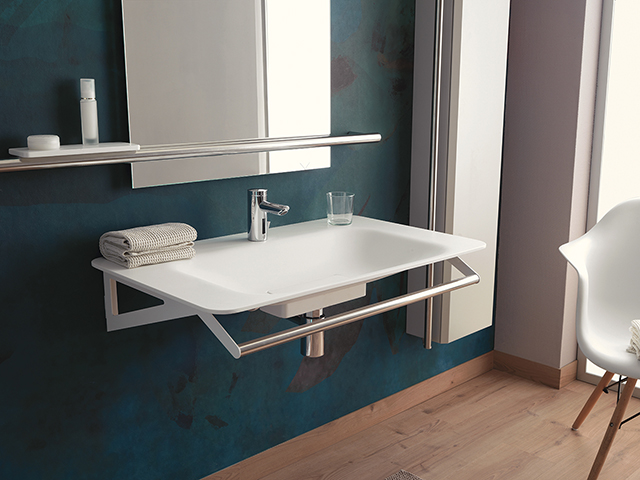Safety has always been a key component of the design and construction industry, but it has taken on added importance due to the COVID-19 pandemic. Ventilation and indoor air quality have been squarely in the spotlight, as has the need for accessibility, as many people were bringing relatives out of assisted-living facilities and nursing homes.
Even before the public-health crisis, however, clients were concerned about water quality in the wake of the Flint, MI lead-contamination disaster; about preventing falls as they or loved ones aged; about indoor air quality as smoke and ash rained down from nearby wildfires and, for those with respiratory or immune system conditions, about toxins in their home materials and furnishings. Those concerns have increased, as well.
All these factors, along with an increased focus on wellness design, has spurred a boom in real estate, design, remodeling, technology and new-home construction. What follows are the perspectives of eight professionals regarding the latest trends. They are:
- National homebuilder Shea Homes’ Marketing V.P. Janet Benavidez;
- New Jersey-based smart home technology integrator, speaker and author Ryan Herd;
- Denver-based full-service interior designer Jennifer Lowry;
- Maria Stapperfenne, CMKBD, a former president of the National Kitchen & Bath Association;
- Colorado-based CMKBD Jan Neiges;
- Shea Pumarejo, a San Antonio-area CMKBD;
- Real estate broker Mauri Tamborra, with RE/MAX Leaders serving Colorado and California’s Central Coast;
- Debra Young, a Delaware-based occupational therapist specializing in inclusive design and a certified specialist in environmental modifications.

Non-porous surfaces, like engineered stone, are increasingly popular with homeowners and design pros.
Photo: Caesarstone
HEIGHTENED INTEREST
There’s nothing like a natural disaster or global pandemic to make people feel less safe – and crave a feeling of security at home. “Health and safety preferences were already growing,” says Shea Homes’ Benavidez, “but the COVID-19 pandemic accelerated homebuyers’ interest in wellness.” This extends far beyond germ reduction to what the building executive calls “emotional, financial and physical wellbeing.” She cites a recent study showing technology, better-equipped kitchens and sanitation as the most desired home features.
Real estate professional Tamborra agrees. “We have noticed heightened interest in technology-based solutions,” she comments. Pre-pandemic, fewer clients were discussing air filtration or indoor air quality, she adds. All types of safety and wellness features that make child-raising or eldercare easier are being discussed now, too.
Design clients are all safety conscious, albeit with different concerns, says designer Lowry. For young couples, it’s about parenting, especially with bathroom choices of tubs, shower sets and the like. For seniors, with some now home from nursing homes or assisted living facilities, falls are the biggest consideration.
Occupational therapist Young has seen an increase in interest in universal design since the pandemic began. “Some features have certainly gained in popularity due to how the pandemic has changed our daily habits and routines,” she reports. With more multi-
generational households and greater interest in cooking, she’s seeing an increased focus on accessible kitchen storage and appliance placement. She’s also seeing interest in accessibility, antimicrobial low-maintenance surfaces and smart-home features that increase safety and convenience.
“Since the pandemic began, everyone has become somewhat of a germaphobe!” declares designer Pumarejo. “Kitchens and bathrooms are the first places that come to mind when we think about germs, and clients are definitely looking at ways to stop the spread and kill (them).”
This has spurred growth in the popularity of antimicrobial surfaces and technologies for countertops, lighting, ventilation and flooring. Nonporous porcelain and quartz (now including outdoor options) continue to trend, and specialized technologies that kill germs of all kinds in kitchens, bathrooms and living areas are gaining in popularity.
Products and technologies that kill airborne viruses and other germs have accelerated with scientific evidence that COVID-19 is mostly spread via aerosolized transmission. Some contractors and builders are adding antimicrobial functionality to their residential HVAC systems. Some fixture companies are adding it to their product lines, and research is continuing on UV-spectrum technologies that are safe and effective for occupied spaces.
Also showing up on the safety front is heightened demand for power generators. Anyone who lived through Texas’ winter outages can appreciate this concern.
“Losing power has gone from being a temporary nuisance to a work and life-stopping event,” Young comments. “More of my clients have become interested in ensuring that their daily activities are not interrupted by a power outage.”
SMART-HOME TECHNOLOGY
One of the biggest growth areas for home safety is smart-home technology. It’s showing up from front entries to garage doors, with plenty of kitchen and bath features in between.
“I believe the pandemic has pushed technology 10 years into the future,” says technology integrator Herd. “The pandemic has also made us more aware of our environment, inside and out, more health-conscious, and more concerned for our well-being.”
The designers, builder and realtor agree. Young sees it in her practice as well, working with clients and their remodeling teams. On a whole-house level, she’s seeing increased interest in lighting, video doorbells and temperature control.
Shea Homes has introduced two home wellness packages with air filtration, water filtration and touchless faucets, Benavidez says. Resale buyers are looking at wellness tech, too, real estate broker Tamborra notes.
“We have noticed heightened interest in apps on smartphones and tablets to control everything,” she observes. “Installations of remote window treatments have also been of increased interest, especially for elderly family members who benefit from the automation. Our clients with children also appreciate the hands-free element for added safety.”
“Every age group has a different need for technology,” Herd comments. For seniors, as he and Young agree, it’s often about safety. Not having to strain or climb to close a window shade helps prevent a fall, and video doorbells help them see who is at the door from a safe spot at home. Smart toilets let seniors enjoy the benefits of hygiene without stepping into a tub.

Induction cooktops and connected hoods that deliver the right ventilation level increase kitchen safety.
Photo: Bosch Home Appliances
KITCHEN SAFETY
Smart technology helps in kitchen spaces too, the professionals all say.
“The number-one concern in the kitchen is fire,” Herd points out. Smart appliances can alert you to a burner left unattended and remotely turn it off. Induction cooktop sales are also steadily increasing, in part because of safety considerations; they are much less likely to be the cause of a fire or burn.
Smart new ventilation hoods that pull smoke and gases out of the air by syncing with paired induction cooktops for the right performance level also add safety to a kitchen. Smart faucets that let homeowners access water without spreading viruses or food-borne contaminants serve a similar function. These aren’t new products; they’re just increasingly interesting to home buyers and homeowners.
Young sees changing trends in microwave placement, locating the appliances more frequently “at an easier and safer reach range below the counter, either integrated into the cabinetry or using a microwave drawer,” she reports.

Safety can be stylish with integrated grab bars.
Photo: Ponte Giulio, pontegiuliousa.com
Wellness by Design (Tiller Press, 2020)
BATHROOM SAFETY
Bathrooms are another potential injury and illness zone, particularly for seniors.
Herd, for one, is seeing growth in voice-control tub and shower features to add safety in these spaces. “Enabling our aging loved ones to ask Alexa to fill up the tub with 80-degree water or to turn on the shower allows them to be a bit safer from bending over and having a fall in the bathroom,” the integrator points out.
Designer Stapperfenne is seeing “mainstream acceptance” in toilets with bidet functionality. These also add an element of bathroom safety by eliminating the need for often-risky tub visits for personal hygiene tasks.
Designer Neiges is adding bathroom safety by specifying antibacterial lights in her Colorado projects, she says. She first spotted this technology at the 2020 Kitchen & Bath Industry Show (KBIS) in the Broan booth, she recalls, as the manufacturer showcased it as a new feature of its bath ventilation products.
Pumarejo is doing a lot of curbless showers in San Antonio, she reports. Linen textured slip-resistant tiles are also a go-to for her. Both she and Neiges cite wall-mount toilets as an easy-to-use safety feature for many clients. “These toilets make for easy cleaning with no grooves for germs to hang out,” the Texan designer comments.
“We’re seeing more interest in touchless faucets, automated toilets and automated soap dispensers in the bathroom,” designer Lowry notes. “Touchless lighting in the bathroom and throughout the home is also showing increased demand,” she adds, as is antimicrobial or non-porous surfaces in bathroom spaces.
Flip-down shower seats and integrated grab bars are also gaining favor, Stapperfenne comments. “Beauty, luxury and safety can all co-exist in the same space,” she adds. The designer looks for “items that look inconspicuous,” she says, like “corner and shower shelving with integrated grab bars.”
FINAL WORDS
We have survived the pandemic, “but it has changed us,” Pumarejo observes.
“Clients are now asking for things like bulk pantry storage, home generators and even indoor hydroponic gardens that can grow your own food,” she notes. These all result from living through COVID and anticipating future potential challenges to the food supply and our ability to provide for our families, she adds.
“I, for one, don’t think it’s a bad idea to be more self-sustainable,” the designer opines. It’s definitely not a bad idea for the kitchen and bath industry to help achieve that goal, either.”
Jamie Gold, CKD, CAPS, MCCWC is an author, wellness design consultant and industry speaker. Her third book, Wellness by Design (Simon & Schuster), published September 2020. You can learn more about her Wellness Market presentations, books, Wellness Wednesdays Clubhouses conversations and consulting services at jamiegold.net.
The post Key Trends in Safety & Wellness Design appeared first on Kitchen & Bath Design News.
Did you miss our previous article…
https://www.culturekitchen.net/?p=139